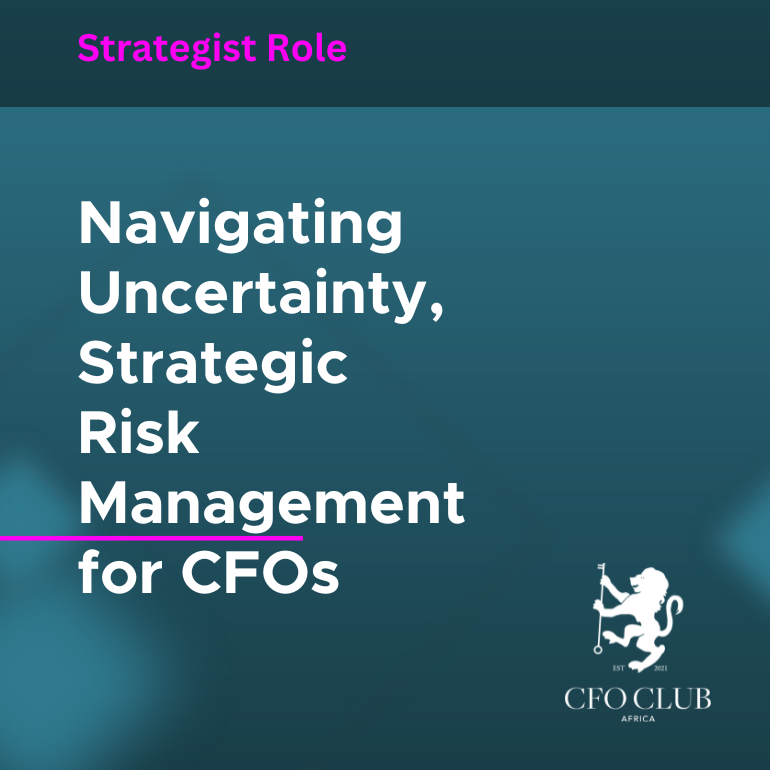Navigating Uncertainty, Strategic Risk Management for CFOs
In today’s fast-changing economic environment, particularly in Africa, CFOs are often at the frontline, facing unique challenges that require sharp strategic risk management skills. This article aims to unpack complex risk management concepts in a straightforward way, offering practical strategies that can help CFOs navigate their organizations through uncertainties effectively.
What is Strategic Risk?
Strategic risk includes any external or internal factors that could significantly impact on your company’s ability to meet its objectives. Whether it’s new regulations, technological changes, or shifts in market demands, understanding these risks is crucial.
Practical Explanation:
- Risk Mapping: Think of this as creating a blueprint that highlights potential risks according to their likelihood and impact. It’s a visual tool that helps you quickly see which issues need the most attention.
Advanced Risk Assessment
Identifying and analyzing risks with a mix of quantitative and qualitative methods helps you focus on what truly matters to your business’s bottom line.
Tools and Techniques:
- Monte Carlo Simulations: This technique uses computer simulations to model different outcomes based on probability, helping you visualize potential risks and their impacts.
- Sensitivity Analysis: This is about testing how sensitive your financial outcomes are to changes in certain variables. It helps pinpoint which risks could have the most significant financial impact.
Strategic Risk Mitigation
After assessing the risks, it’s time to develop a plan to manage them according to your company’s appetite for risk and overall strategy.
Practical Strategies:
- Derivatives and Hedging: Use financial instruments like forwards, options, and swaps to manage risks such as currency fluctuations, helping stabilize your financials.
- Diversification: Reduce reliance on a single revenue stream or market by diversifying your business activities and investments.
Implementing Risk Controls
Setting up effective risk controls involves both preventive measures to avoid risks and detective measures to address them when they occur.
Implementing Controls:
- Automated Risk Triggers: Implement systems that automatically alert you when risk thresholds are exceeded, allowing for prompt action.
- Risk Management Software: Use software that integrates risk management across your company, giving you a clear overview and better control.
Continuous Monitoring and Review
With the economic landscape continually evolving, especially in Africa, keeping a regular check on your risk management strategies ensures they remain relevant and effective.
Ongoing Processes:
- Dashboard Reporting: Use dashboards for real-time insights into key risk indicators, enabling quick, informed decision-making.
- Scenario Planning: Engage regularly in scenario planning to prepare for different potential future risks and devise strategies in response.
Case Study: Effective Risk Management in Action
Consider a South African telecom CFO who implemented an advanced analytics dashboard to monitor credit risk exposure. By adjusting credit policies in response to real-time data during an economic downturn, the CFO effectively minimized losses.
In summary, strategic risk management is about preparing and empowering your organization to face potential threats head-on and turn them into opportunities. By utilizing advanced tools and maintaining a proactive approach, CFOs can ensure their organizations not only survive but thrive amid uncertainties. This balanced approach provides the necessary clarity and action points for CFOs across Africa looking to enhance their strategic risk management practices.

